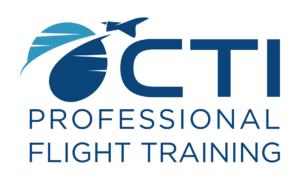Top 8 Historical Moments in Flight
Before we reached the skies I’m sure our ancestors never imagined their descendants would eventually not only fly but fly into the stars. Every great moment in flight inspired the next generation of aviators to try flying higher, faster, and farther. Their efforts, dreams, and hard work helped shape civilization into what it is today. Let’s take a look at the top 10 moments in flight that has built upon each other to get us where we are today.
The Hot-Air Balloon
Modern flight began when people noticed paper bags rise on the flow of heated air. French brothers, Joseph-Michael and Jacques-Etienne Montgolfier were the first to take this observation to the next level. In 1783, they started building and flying hot-air balloons that carried sheep, ducks, and eventually human passengers.
Powered Airships
The French continued with early aviation innovation with powered airships. Charles Renard and Arthur C. Krebs, inventors and military officers in the French Army Corps of Engineers, built the first airship. The airship’s flight was controlled using a battery-powered electric motor and wooden propeller.
The Wright Brothers
Brothers Orville and Wilbur Wright were the first to develop the working principles for modern aircraft. They changed history when they took flight with their Wright Flyer for 12 seconds during a test flight at Kitty Hawk, North Carolina. The engineering and design principles behind their Wright Flyer set the stage for future airplane development.
The First Commercial Airline
The first scheduled airline passengers flew between St. Petersburg and Tampa, Florida. The flight lasted a total of 20 minutes. The same trip took several hours by steamship, train, or car. The 1914 airline debut opened the door for time-efficient travel.
Charles Lindbergh
Lindbergh’s historic flight across the Atlantic paved the way for long air travel. The transatlantic flight took 34 hours and forever transformed the world’s views on the possibilities of air travel.
The Sound Barrier
Only bullets had broken the sound barrier before Chuck Yeager climbed into a U.S. Aire Force rocket-powered aircraft in 1947. The Bell X-1 was shaped in the image of a machine gun bullet to help Yeager break the sound barrier. Breaking the sound barrier set a new monumental milestone for future aviation.
The First Man in Space
Yuri Gagarin faced extremely risky flight conditions to become the first human in space in 1961. The 108-minute orbit of the Earth aboard the Soviet Vostok 1 spacecraft welcomed in the era of manned spaceflight.
First Men on the Moon
The Soviets beat the US to Space, but the US beat the Soviets to the moon. Neil Armstrong and “Buzz” Aldrin, became worldwide celebrities when they set foot on the moon on July 20, 1969. They left behind footprints, part of their spacecraft, and an American flag.
Ready to Take Part in History?
Who knows what innovations lie ahead in the aviation world. Chances are, space travel will become at least a tourist staple in the coming decades. Global travel should get more efficient and cost-effective. Now more than ever is the perfect time to start a career in aviation. Demand is at all-time highs for pilots and is projected to stay that way for the next two decades. Find out more about which CTI programs make sense for you.
